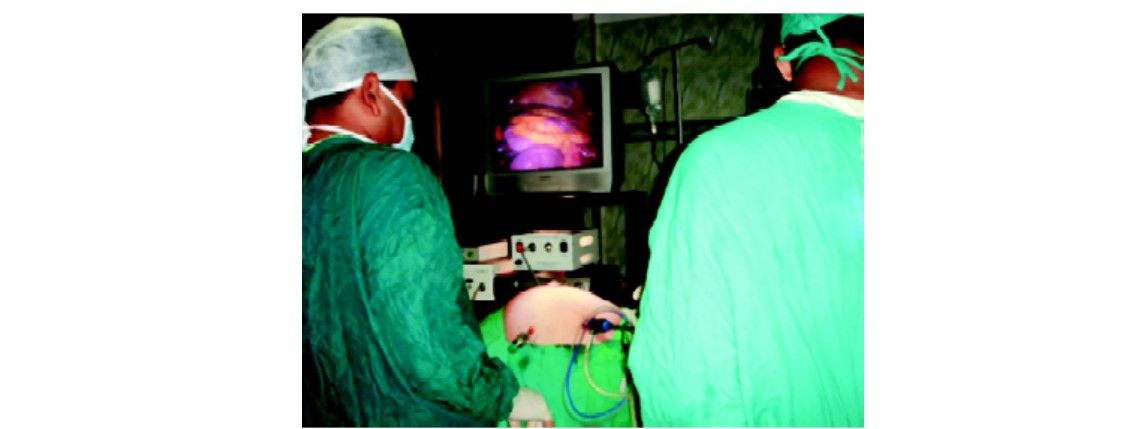Two Port Repair of Ventral Hernia
A two-port ventral hernia is one of the options in case of small uncomplicated ventral hernia surgery. The patient should be under general anesthesia, a nasogastric tube is introduced and there should not be any organomegaly if the surgeon is planning two-port laparoscopic repair of ventral hernia. Access is performed through Palmer’s point. Veress needle or open technique both can be used for access from the palmar’s point. All the safety indicators should be used and checked at the time of access. Ten mm port should be introduced carefully through Palmer’s point. It should be introduced perpendicular not oblique towards anus to avoid injury of splenic flexor of the colon. The telescope should be introduced and the size extent and content of hernia are assessed.
After the initial assessment of ventral hernia one more port is introduced according to the baseball diamond concept but keeping the Azimuth angle (angle between telescope and instrument 45°). The content of the hernia is reduced and adhesiolysis should be performed for any possible omental or bowel adhesion. The size of the mesh is selected in such a way that, at least it should cover 4 cm all around beyond the healthy margin of defect. One millimeter wide, just skin deep stab incision should be given at all the four corners of mesh. Twelve cm long Prolene is tied around three corners of the mesh and one of the remaining corners should be tied through the needle and thread introduced through one of the stab wounds of the skin. The thread which was introduced percutaneously will help to stabilize the mesh and it will act as the third port.

Access is done through the Palmar’s point

45° Azimuth angle is kept for second-port

Twelve-centimeter long Prolene is tied at three corners of the mesh keeping 6 cm long pair of free suture at each end

Each pair of the suture is pulled out through the same skin incision but different rectus and muscle layer
Both the end of Prolene is pulled out through the same skin puncture side but keeping rectus and peritoneum in between. The end of both the thread should be ligated using a tumble square knot and it should be slipped inside skin depth before locking to avoid loosening. This two-port technique can be accomplished with the help of Anchor or Protack or Tacker if the patient can afford it. A two-port technique using Prolene is a safe and economical method of performing laparoscopic repair of ventral hernia. Although using strategically placed knot we have performed one port repair of ventral hernia also with the help of suture passer but if adhesions are present one port technique is not possible. Two-port techniques should be included in the practice of repair of ventral hernia surgery laparoscopically because in case of any difficulty the third port can be introduced any time without any difficulty.

Both ends of the suture is tied outside the skin. Skin is lifted to slip the knot subcutaneously


